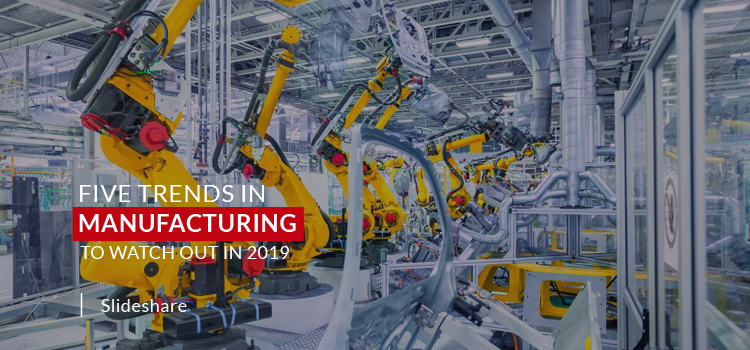The interference of technology in the manufacturing industry can prove to be useful with these trends predicted for 2019. Check out the five trends in manufacturing for 2019 below and the impact they will have on the employees, employers and the industry.
5G is coming
The advent of 5G in 2019 will be a key enabler of industry 4.0 in the manufacturing sector right from improving the management of data to enabling next level collaboration between suppliers and end users. The 5G networks will allow manufacturers to build smart factories following real-time connectivity.
Next level automation
The term ‘digital transformation’ sounds vague to some and these are those who have failed to embrace new innovations. The upcoming days will be a tough call for them to compete in the market. Therefore, the rising levels of automation are important for manufacturers to remain competitive and meet the demands for goods manufactured from established and emerging markets.
Transformative manufacturing
In the days forward, the connected systems that leverage the cloud, IoT, AI and machine learning will play a crucial role in making manufacturers smarter. The manufacturers too believe that technology that analyses big data will play a greater role in their business over the next three years.
Adaptation of an evolving workforce
The non-availability of employees with technical know-how can create a skill gap in 2019. The requirement of jobs will majorly shift to technical knowledge unlike previous years where manufacturing skills were enough. That is why the training of staff to incline more on digital transformations is important. The efforts will be required to make sure that traditional workforces are equipped and ready to work in this new digital environment. The employees will have to understand the benefits businesses can incur by becoming more digital.
E-learning
With the days passing, the businesses will have to spend money on innovation and invest more in technology to resolve problems, allowing the staff to work on crucial things and add value to the organization. This can include the transformation of production processes, optimizing sales and marketing or improving customer services. The investment in technology should not be about buying the latest software, rather, identifying how the business model can be transformed to surpass competitors and serve the customers better.












